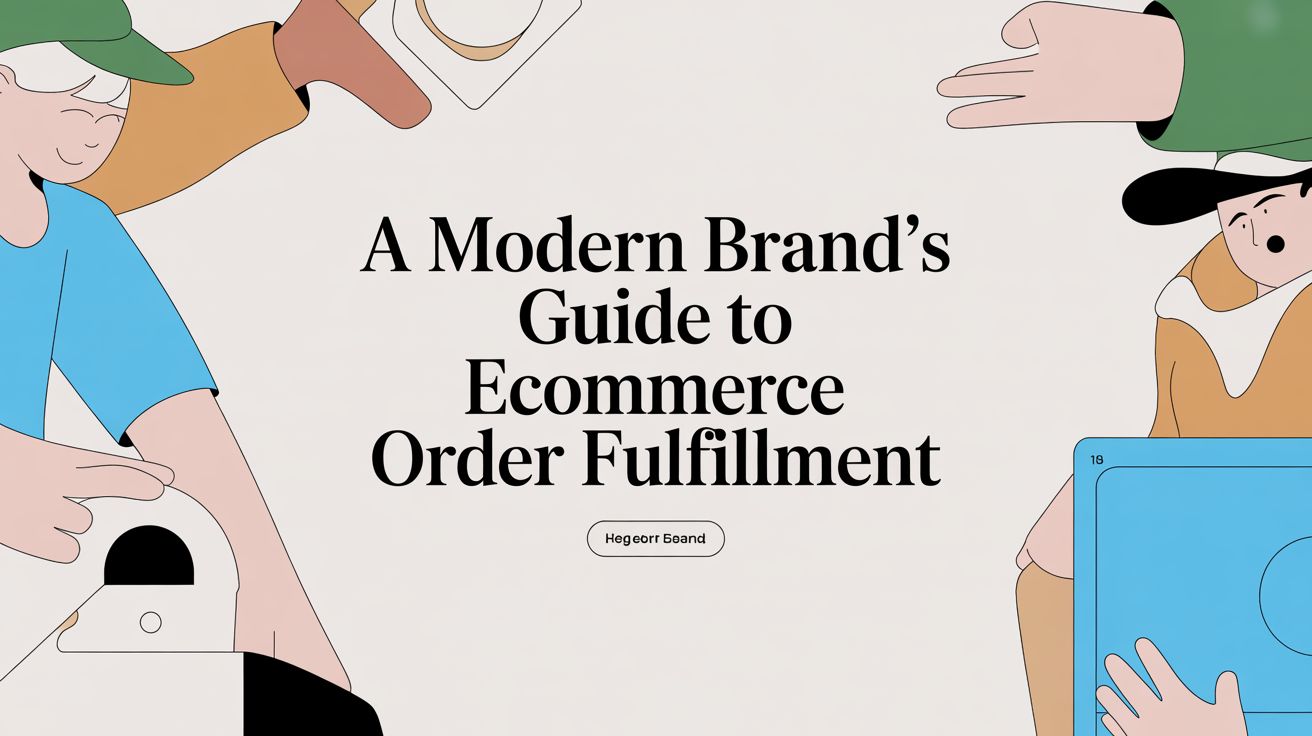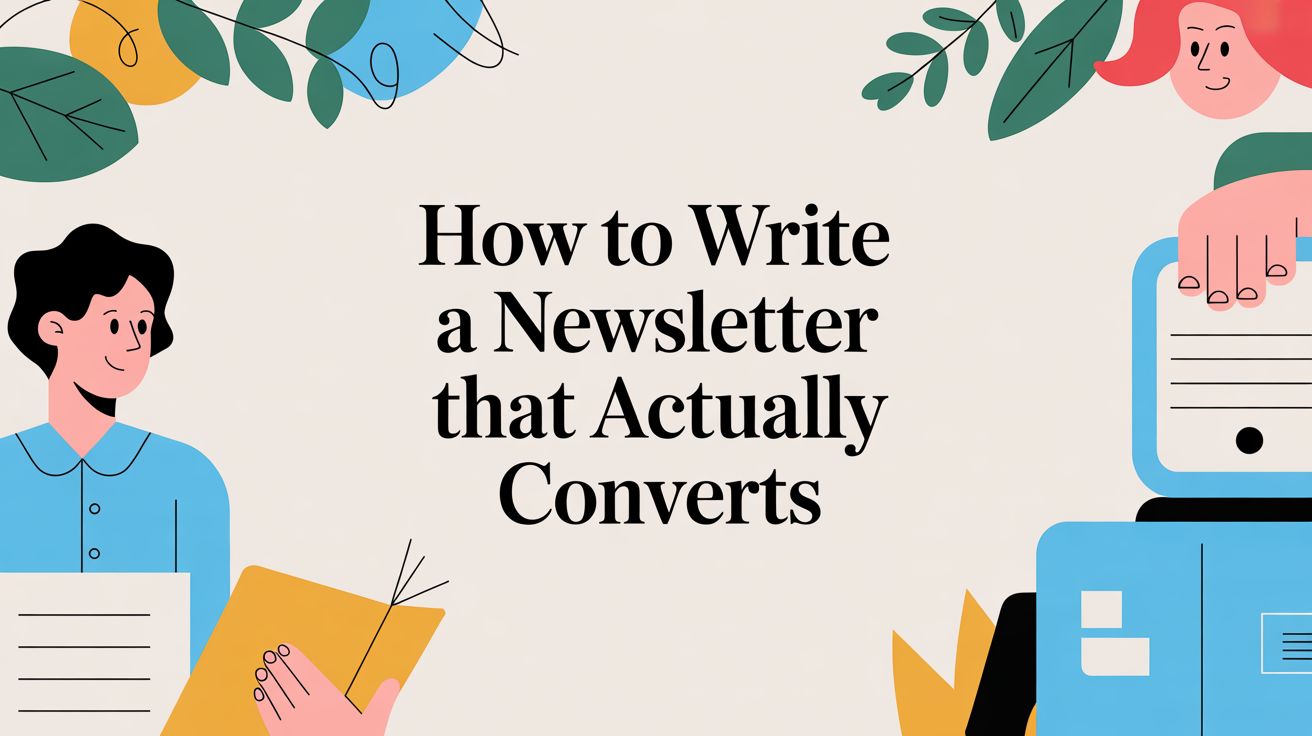
The Psychology of Profit: 10 Conversion Rate Optimization Best Practices That Drive Revenue
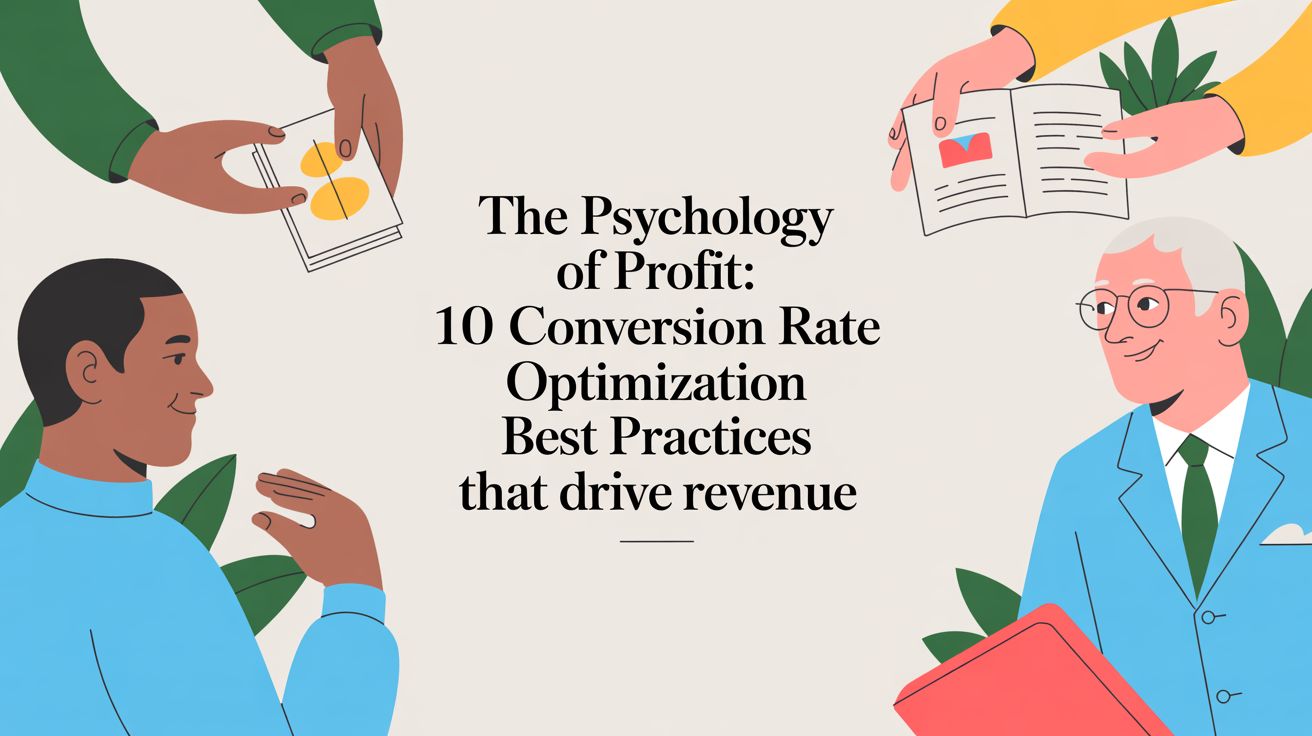
In e-commerce, a 2.5% average conversion rate is the norm, and cart abandonment plagues nearly 70% of shopping sessions. To rise above these benchmarks, you need more than just a slick design and basic countdown timers. The key to unlocking significant revenue growth lies in a deeper understanding of consumer psychology. This guide moves beyond surface-level tips to provide 10 advanced conversion rate optimization best practices, grounding each strategy in the science of shopper behavior.
We will explore how to apply behavioral economics principles, from scarcity and social proof to anticipation, to transform your entire shopper journey. Each practice is designed not just to nudge a conversion metric, but to directly impact your ROI, protect profit margins, and create a sophisticated marketing engine that drives sustainable growth. You will learn how to turn casual browsers into loyal customers by strategically optimizing every touchpoint, from your landing pages and CTAs to your checkout forms.
This is not a list of generic advice. Instead, you'll find a structured roadmap with actionable insights and practical implementation details for enhancing your UX, personalizing the customer experience, and building a culture of continuous experimentation. Prepare to move beyond basic tactics and implement a CRO strategy that generates measurable revenue and creates a powerful competitive advantage.
1. Master Urgency & Scarcity with Behavioral Science, Not Just Timers
Many e-commerce stores slap a countdown timer on a product page and call it a day. This is a surface-level approach to one of the most powerful conversion rate optimization best practices. True mastery involves moving beyond basic timers and leveraging the psychological principles of behavioral science to create authentic motivation. It’s about crafting a narrative around limited availability that resonates with the consumer’s inherent fear of missing out (FOMO) and loss aversion.
Instead of just showing a clock, this strategy focuses on the why behind the time limit. Is it a limited-edition product drop? Is inventory genuinely low due to high demand? By grounding urgency in real-world constraints, you transform a generic promotion into a compelling event, driving immediate action and protecting profit margins without devaluing your brand. This sophisticated approach to urgency, expertly applied by platforms like Quikly, elevates banners and popups into high-ROI moments within the shopper's journey.
How to Implement Behavioral Urgency
- Frame the Scarcity: Instead of "Sale ends in 24 hours," try "Only 15 left at this price." This shifts the focus from a generic deadline to a tangible, limited quantity, which behavioral economics shows is a more potent motivator.
- Leverage Anticipation: Announce limited-time offers or exclusive product drops in advance through email or SMS platforms like Klaviyo. This builds excitement and primes customers to act quickly once the offer goes live, a key tactic for maximizing engagement and revenue.
- Use Dynamic Social Proof: For Shopify stores, integrate apps that can display real-time inventory levels ("Only 5 left!") or social proof ("20 people have this in their cart"). This provides credible context that makes the urgency feel helpful, not manipulative.
Key Insight: The most effective urgency isn’t manufactured; it’s a transparent reflection of real-world constraints like inventory levels or time-sensitive events. This builds trust and transforms urgency from a sales gimmick into a helpful piece of information for the consumer.
2. User Experience (UX) Optimization
Many businesses chase conversions by adding more features or promotions, inadvertently complicating the user journey. A more effective conversion rate optimization best practice is to focus on subtraction: removing friction. User Experience (UX) optimization is the science of making your website intuitive, seamless, and enjoyable to use, ensuring visitors can achieve their goals with minimal effort.
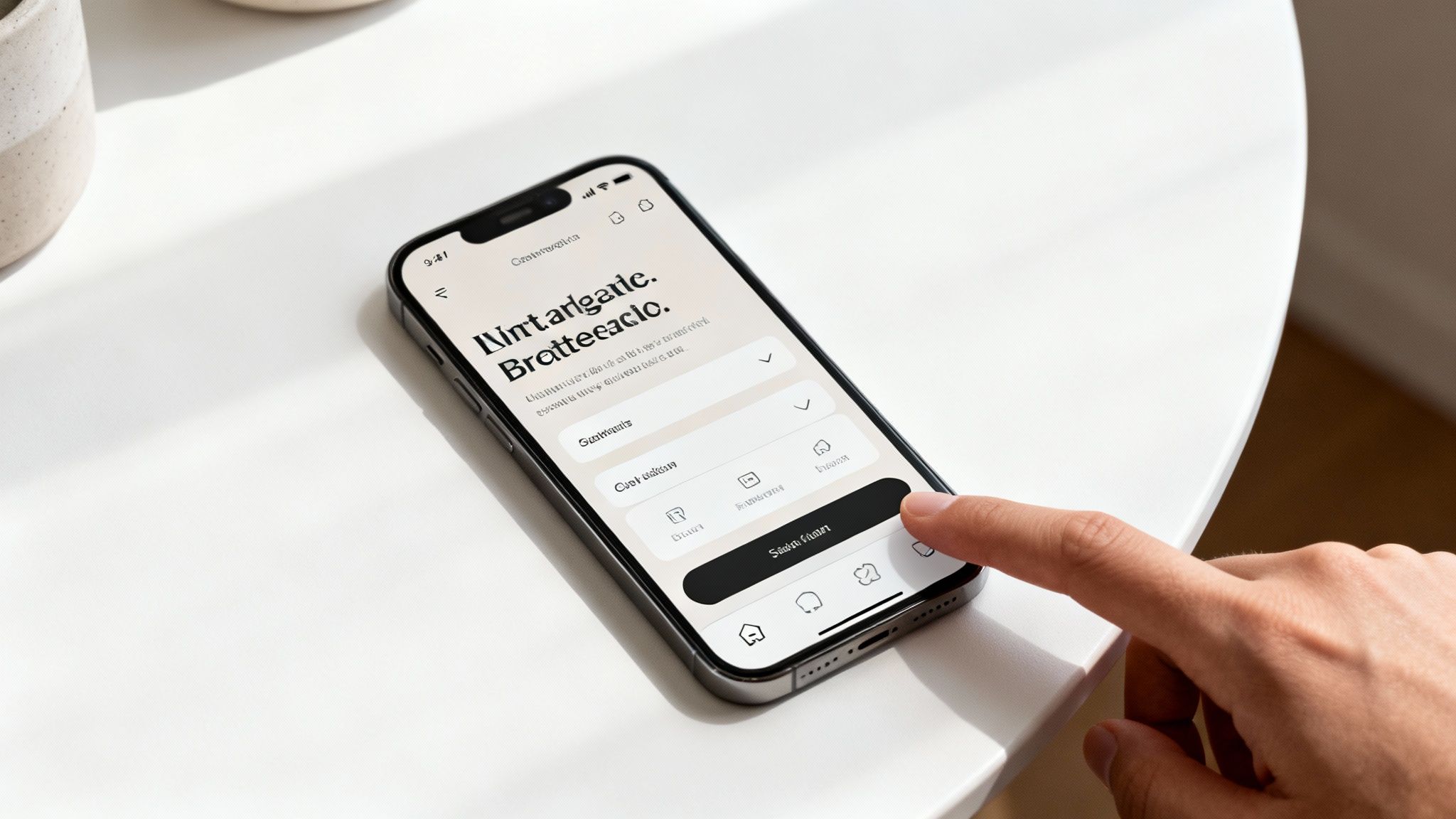
This approach moves beyond aesthetics to address core usability issues that cause frustration and cart abandonment. By understanding how users actually interact with your site, you can simplify navigation, clarify messaging, and streamline the path to purchase. The result is a smoother experience that builds trust and guides customers effortlessly toward checkout, directly impacting your bottom line.
How to Implement UX Optimization
- Prioritize a Mobile-First Design: With the majority of e-commerce traffic coming from mobile devices, your site must be flawless on smaller screens. This means optimizing for touch, ensuring fast load times, and simplifying checkout forms for mobile users.
- Analyze User Behavior with Heatmaps: Tools like Hotjar or Crazy Egg provide visual data on where users click, scroll, and drop off. Use these insights to identify confusing elements or broken links in your conversion funnel.
- Reduce Cognitive Load: Simplify your design and messaging. Use clear headlines, concise product descriptions, and an obvious visual hierarchy to guide the user's attention. Avoid overwhelming visitors with too many choices or distracting popups.
Key Insight: Excellent UX is invisible. Customers don't notice a great user experience; they only notice a bad one. The goal is to make the path from discovery to purchase so frictionless that the user doesn't have to think, leading directly to higher conversions and customer satisfaction.
3. Analyze Your Conversion Funnel to Pinpoint Revenue Leaks
Simply driving traffic to your store is not enough; you must understand the journey users take and, more importantly, where they abandon it. Funnel analysis is one of the most critical conversion rate optimization best practices because it provides a roadmap of your customer’s path, from initial awareness to final purchase. It systematically breaks down this journey into stages, revealing the exact points where friction causes potential customers to drop off.
This data-driven approach moves beyond guesswork. Instead of wondering why sales are low, you can see that 40% of users leave when presented with shipping costs or that a specific product page has an unusually high exit rate. By identifying these leaks, you can focus your optimization efforts where they will have the greatest financial impact, directly protecting your ROI.
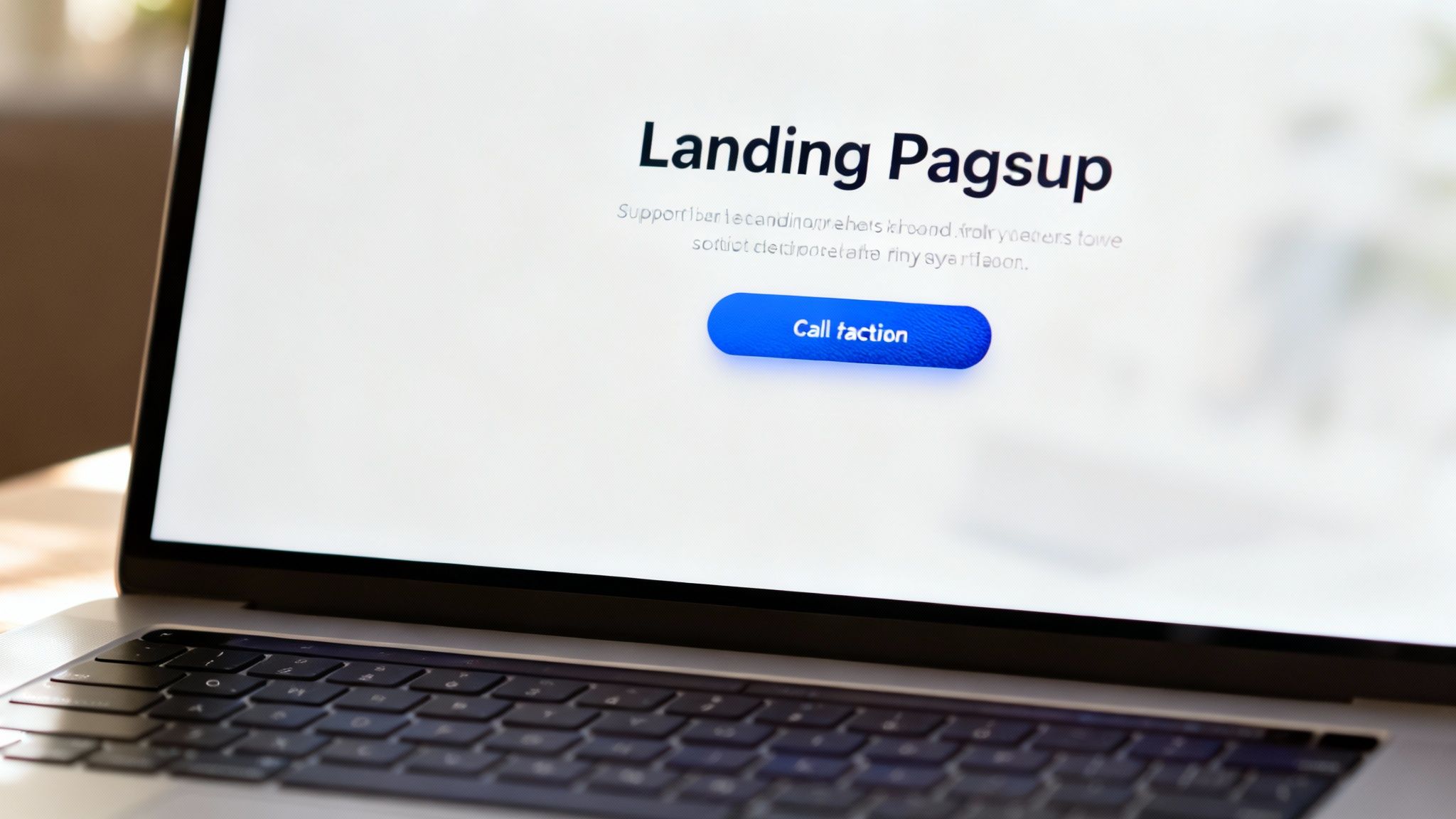
How to Implement Funnel Analysis
- Segment Your Data: Don't just look at the overall funnel. Segment your analysis by traffic source (e.g., Google Ads vs. organic search), device type (mobile vs. desktop), and user type (new vs. returning) to uncover more granular insights.
- Use Session Recordings: Tools like Hotjar or Microsoft Clarity allow you to watch recordings of user sessions. When you see a major drop-off point in your funnel analytics, watch recordings of users who left at that stage to understand the why behind their actions.
- Prioritize the Biggest Leaks: Identify the single stage in your funnel with the most significant drop-off rate. This is your biggest opportunity. Focusing your resources on fixing this one problem area will yield the most immediate and substantial results for your store.
Key Insight: A conversion funnel isn’t just a report; it’s a diagnostic tool for your business's health. It tells you precisely where your user experience is failing and allows you to surgically apply fixes instead of making broad, ineffective changes.
4. Persuasive Copywriting and Messaging
Powerful copy does more than just describe a product; it connects with the customer's core needs and desires, making the value proposition irresistible. This conversion rate optimization best practice moves beyond listing features to tell a compelling story. It uses psychological triggers and benefit-driven language to address pain points, overcome objections, and guide visitors toward a confident purchase decision.
Effective messaging frames the product as the solution to a problem, creating an emotional connection that builds brand loyalty. It transforms passive browsing into active engagement by answering the customer's unspoken question: "What's in it for me?"
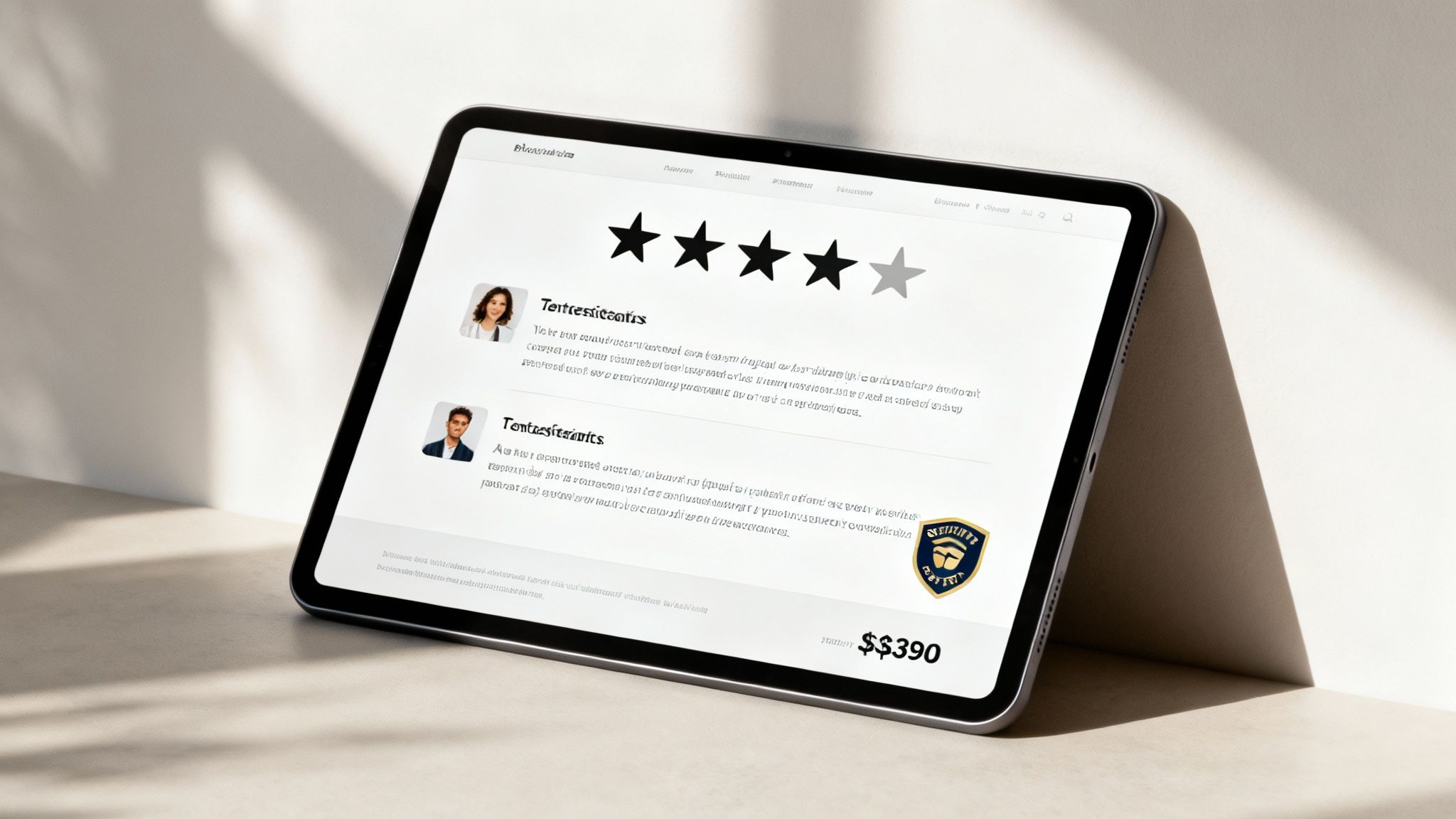
How to Implement Persuasive Copy
- Focus on Benefits, Not Features: Instead of saying "Our moisturizer has hyaluronic acid," say "Achieve deeply hydrated, visibly plump skin that lasts all day." The first is a feature; the second is a benefit the customer desires.
- Use Second-Person Language: Write directly to your customer using "you" and "your." This creates a personal, one-to-one conversation that makes the messaging more impactful and relevant.
- Incorporate Power Words and Data: Use action-oriented words like ‘Discover,’ ‘Instantly,’ and ‘Guaranteed.’ When possible, quantify results ("Trusted by over 10,000 customers") to build credibility and social proof. Powerful copywriting helps reframe value, and this can be further enhanced by incorporating creative incentive marketing strategies.
Key Insight: The best copy isn’t about your product; it’s about your customer's transformation. By focusing on the outcome and emotional payoff, you shift the conversation from a simple transaction to a valuable solution, making your offer far more compelling.
5. Landing Page Optimization: Isolate the Action
Sending paid traffic from an ad or email directly to a busy homepage is a common conversion killer. Landing page optimization, a cornerstone of effective conversion rate optimization best practices, involves creating dedicated, standalone pages designed for a single, focused conversion goal. This eliminates navigation distractions and aligns the user's journey directly from the traffic source to the desired action.
By matching the message from the ad creative to the landing page content, you create a seamless and persuasive experience. This focused approach removes friction and decision fatigue, significantly increasing the likelihood that a visitor completes the intended goal, whether it's making a purchase, signing up for a newsletter, or downloading a guide. For a holistic approach to efficiency that can indirectly support your conversion efforts by reducing friction and speeding up processes, consider exploring business process automation examples.
How to Implement Landing Page Optimization
- Maintain Message Match: Ensure your landing page headline and hero image directly reflect the ad copy or link text the user clicked. This immediately confirms they are in the right place.
- Simplify and Focus: Remove the main site navigation, footer links, and any other elements that could distract from the primary call-to-action (CTA). The page should have one job.
- Optimize the Form: Keep form fields to an absolute minimum. Ask only for the essential information needed to complete the conversion. For lead generation, 3-5 fields is ideal.
- Place the CTA Strategically: Your main call-to-action button should be clearly visible above the fold and use a contrasting color that makes it stand out from the rest of the page.
Key Insight: A landing page isn't just a regular page on your website; it's a purpose-built conversion machine. By isolating the conversion goal and removing all other distractions, you guide the user's attention and make the desired action the easiest and most logical next step.
6. Build Credibility with Social Proof and Trust Signals
Shoppers are inherently skeptical. They look for cues that a brand is legitimate and that its products are as good as advertised. This is where social proof and trust signals become critical conversion rate optimization best practices. By showcasing positive experiences from other customers, you leverage the psychological principle of consensus, effectively letting your happy customers sell for you.
This goes beyond just having a reviews section; it’s about strategically integrating validation at every key decision point. From user-generated content on a product page to security badges in the checkout, these signals work together to reduce perceived risk, dismantle purchase anxiety, and build the confidence a shopper needs to click "Buy Now."
How to Implement Social Proof and Trust Signals
- Display Specific, Authentic Reviews: Instead of generic praise, feature reviews with photos, specific details about product usage, and verified purchaser badges. For Shopify stores, apps like Judge.me or Loox can automate this process and display reviews prominently.
- Showcase Recognizable Logos: If you serve B2B clients or have been featured in well-known media, display those logos on your homepage and checkout pages. This borrows credibility from established brands, creating a powerful halo effect.
- Use Quantitative Social Proof: Don't just say customers love you; prove it with numbers. Phrases like "Over 50,000 satisfied customers" or "Join 10,000+ subscribers" provide concrete evidence of popularity and trustworthiness. Learn more about how to leverage these psychological triggers effectively.
Key Insight: The most powerful trust signals are specific and verifiable. A detailed video testimonial from a real person is far more impactful than a generic five-star rating, as it provides a relatable story that new customers can connect with on an emotional level.
7. Form Field Optimization
Every field in a checkout or sign-up form is a potential point of friction that can cause a user to abandon the process. Effective form field optimization is one of the most direct conversion rate optimization best practices because it systematically removes these barriers. The goal is to make the process as seamless and effortless as possible, reducing cognitive load and respecting the user's time.
This isn't just about deleting fields; it's a strategic process of questioning the necessity of every single piece of information you ask for. By simplifying forms, you directly impact completion rates, which translates to more leads, more sales, and a better customer experience. A streamlined checkout process is particularly crucial for Shopify Plus merchants aiming to minimize friction for high-value customers.
How to Implement Form Field Optimization
- Ruthlessly Cut Non-Essential Fields: For every field, ask: "Is this information absolutely critical for this specific transaction?" Postpone collecting secondary data like birthdays or company names until after the initial conversion.
- Adopt a Single-Column Layout: Multi-column layouts can disrupt a user's vertical reading rhythm, causing confusion and missed fields. A single, linear path is almost always more efficient and user-friendly.
- Place Labels Above Input Fields: Placing labels directly above their corresponding fields is the clearest, most scannable format, especially on mobile devices. Avoid placeholder text as labels, as it disappears once the user starts typing.
- Implement Real-Time Validation: Provide instant feedback as users fill out the form. A green checkmark for a valid email or a red error message for an incorrect credit card number prevents frustration and streamlines the submission process.
Key Insight: The best form is the shortest form possible. Every field you remove is a barrier to conversion eliminated, directly boosting your sign-up or checkout completion rate and reducing cart abandonment.
8. Call-to-Action (CTA) Optimization
Your call-to-action (CTA) is the gateway to conversion, yet many brands treat it as an afterthought with generic text like "Submit." Effective CTA optimization is a core component of conversion rate optimization best practices, transforming a simple button into a powerful psychological trigger. It’s about using specific, action-oriented language and strategic design to eliminate decision friction and guide the user seamlessly toward the desired action.
A well-optimized CTA does more than just tell users what to do; it communicates value and clarifies the benefit they will receive. By shifting from passive commands to compelling invitations, you can directly influence user behavior and significantly lift conversion rates. This small change often yields disproportionately large results because it targets the final moment of decision in the customer journey.
How to Implement CTA Optimization
- Use Action-Oriented, First-Person Language: Replace generic words with powerful verbs that imply a benefit. Instead of "Submit," test "Get My Free Guide" or "Create My Account." This first-person framing creates a sense of ownership and relevance.
- Design for Visibility and Contrast: Your CTA button must stand out. Use a color that contrasts sharply with the page background to draw the eye, and ensure it is large enough to be easily tapped on mobile devices without accidental clicks.
- Add Supporting Microcopy: Reduce anxiety and build trust by adding a small line of text near the CTA, such as "No credit card required" or "Join 50,000+ subscribers." This secondary text can overcome last-minute hesitation. For a deeper look, you can learn more about what makes a good CTA.
Key Insight: A high-converting CTA isn’t just a button; it’s the culmination of a persuasive argument. It should feel like the natural and obvious next step for the user by clearly articulating the value of the action and removing any ambiguity.
9. Go Beyond "Hi, [First Name]" with Advanced Personalization & Segmentation
Displaying the same website to every visitor is a missed opportunity. One of the most impactful conversion rate optimization best practices is treating customers as individuals, not a monolith. Personalization delivers tailored experiences based on visitor data like location, on-site behavior, and traffic source. Segmentation groups these visitors into cohorts, allowing you to deploy hyper-relevant messaging, offers, and content that resonate on a deeper level.
This strategy moves far beyond basic first-name-basis marketing. It’s about dynamically altering the customer journey to match their intent, just as a skilled salesperson would in a physical store. For example, a new visitor from a Google ad for "running shoes" should see a different homepage banner than a returning VIP customer. This level of relevance drives significant revenue and is a key differentiator for enterprise-level brands.
How to Implement Personalization & Segmentation
- Start with Simple Segments: Begin by creating distinct experiences for obvious groups. For instance, show a "Welcome! Get 10% Off Your First Order" banner to new visitors, while showing returning customers a "Welcome Back! See What's New" message.
- Leverage Behavioral Data: Use browsing history, past purchases, and cart contents to create high-value segments. A customer who has only ever purchased from your "Men's Sale" category should be targeted with promotions relevant to that specific interest.
- Personalize by Funnel Stage: A visitor in the awareness stage might see content about your brand's mission, while someone in the decision stage could be shown customer reviews and a limited-time shipping offer to close the sale. Shopify Plus merchants can use tools like Shopify Functions to customize the checkout experience for specific customer segments.
Key Insight: True personalization isn't about knowing a customer's name; it's about understanding their context and intent. By delivering the right message to the right segment at the right time, you make the shopping experience feel less like a transaction and more like a conversation, significantly boosting conversion rates. Learn more about how to get started with personalization in B2C marketing to build a solid foundation.
10. Foster a Culture of Continuous Testing and Experimentation
Effective conversion rate optimization isn’t a one-time project; it's a fundamental cultural shift. Moving from opinion-based decisions to a data-driven experimentation mindset transforms your organization into a learning engine. This cultural approach focuses on systematically testing hypotheses to compound improvements over time and build a sustainable competitive advantage.
Instead of relying on gut feelings, this practice establishes a framework where every significant change is validated against a clear business objective. It’s about building a process where even a "failed" test provides valuable insights, ensuring your team is always moving forward with a deeper understanding of your customer. This is one of the most powerful conversion rate optimization best practices for long-term growth and increased profitability.
How to Implement an Experimentation Culture
- Standardize Your Hypothesis: Adopt a clear framework for every test, such as "We believe that [making this change] for [this audience] will result in [this outcome] because [this reason]." This forces clarity and strategic thinking.
- Prioritize with a Framework: Use a model like ICE (Impact, Confidence, Ease) or PIE (Potential, Importance, Ease) to score and rank potential experiments. This ensures you’re dedicating resources to tests with the highest potential return.
- Share All Learnings: Create a central repository or internal communication channel to share the results of every experiment, both wins and losses. This democratizes knowledge and prevents teams from repeating past mistakes.
Key Insight: A true experimentation culture celebrates learning above all else. When a test fails to produce a lift, the valuable insight gained about customer behavior is still a win for the organization, preventing future resource waste on ineffective strategies.
Top 10 CRO Best Practices Comparison
| Technique | Implementation complexity | Resource requirements | Expected outcomes | Ideal use cases | Key advantages |
|---|---|---|---|---|---|
| A/B Testing (Split Testing) | Medium — requires tooling and proper instrumentation | Moderate traffic, testing platform, analyst time | Measurable uplift and validated changes | Isolated element tests on high-traffic pages | Data-driven decisions; risk reduction; scalable |
| User Experience (UX) Optimization | Medium–High — iterative design and research | Designers, UX researchers, development effort | Improved engagement, lower bounce, better retention | Site redesigns, mobile experiences, onboarding flows | Better satisfaction, SEO lift, improved retention |
| Conversion Rate Funnel Analysis | High — multi-step tracking and attribution complexity | Analytics stack, event tracking, data analysts | Pinpoints drop-offs; prioritized optimization opportunities | Multi-step checkouts, SaaS sign-up flows, long funnels | Identifies bottlenecks; guides high-impact fixes |
| Persuasive Copywriting and Messaging | Low–Medium — craft and test messaging | Skilled copywriters, editing, A/B tests | Higher CTRs and conversion rates | Landing pages, CTAs, email campaigns | Increases perceived value; relatively low cost |
| Landing Page Optimization | Medium — design, alignment, and testing | Landing page builder, designer, copy, maintenance | Higher campaign-specific conversions and relevance | Paid campaigns, product launches, lead gen | Clear attribution; better ad quality and conversion |
| Social Proof and Trust Signals | Low — straightforward implementation | Review systems, testimonial collection, moderation | Increased trust and conversion likelihood | E-commerce, pricing pages, new-customer flows | Reduces hesitation; low implementation cost |
| Form Field Optimization | Low–Medium — front-end and UX changes | Developers, UX input, validation logic | Higher form completion and better data quality | Sign-ups, lead forms, checkout flows | Direct lift in submissions; reduced abandonment |
| Call-to-Action (CTA) Optimization | Low — quick text/design updates and tests | Designer/copywriter, quick A/B tests | Rapid improvements in click and conversion rates | Buttons across site, landing pages, ads | High ROI; fast to test and deploy |
| Personalization and Segmentation | High — data, rules or ML systems required | Data platform, engineers, privacy compliance | Increased relevance, higher conversion and LTV | Returning users, recommendations, ABM | Better targeting; improved engagement and revenue |
| Continuous Testing & Experimentation Culture | Very High — organizational change and governance | Experimentation tools, training, cross-functional teams | Compounded long-term growth and faster learning | Mature product orgs aiming for sustained optimization | Sustained improvement; removes opinion-based decisions |
From Tactics to Transformation: Your Path to Higher Conversions
You've explored the foundational pillars of e-commerce success: A/B testing, UX optimization, persuasive copywriting, and building trust. Each of these conversion rate optimization best practices represents a powerful lever for growth. However, true transformation doesn't come from applying these tactics in isolation. It emerges when they are integrated into a cohesive, customer-centric strategy grounded in continuous learning and experimentation.
The journey from a 2% conversion rate to a 4% conversion rate is not about finding a single "magic bullet." It's about systematically removing friction, clarifying your value proposition, and understanding the psychological drivers behind consumer behavior. It’s about recognizing that optimizing a form field is as critical as crafting a compelling headline, and that the data from a funnel analysis should directly inform your next A/B test.
Key Takeaways for Immediate Action
To move from theory to implementation, focus on these core principles:
- Embrace a Data-First Mindset: Your analytics platform is your source of truth. Stop guessing what customers want and start analyzing their behavior to identify the most significant drop-off points in your conversion funnel. This is the starting point for any meaningful optimization effort.
- Prioritize the Customer Journey: View your website not as a collection of pages, but as a complete journey. Every element, from the landing page copy to the CTA button color and the trust signals in your checkout, must work in harmony to guide the user seamlessly toward a purchase.
- Ground Strategy in Psychology: The most effective optimization tactics are rooted in proven behavioral science. Principles like social proof (reviews, testimonials), scarcity (limited stock), and urgency (time-sensitive offers) aren't manipulative tricks; they are powerful tools for motivating action when used ethically and authentically.
Your Next Steps to Higher Revenue
Implementing these conversion rate optimization best practices is an ongoing process, not a one-time project. Start by choosing one high-impact area identified in your funnel analysis. Is it cart abandonment? Or perhaps a high bounce rate on a key product page? Form a clear hypothesis, design a controlled test, and measure the results against your primary KPIs, such as revenue per visitor and average order value.
By committing to this iterative cycle of analysis, testing, and learning, you build more than just a higher conversion rate. You build a resilient, profitable, and customer-obsessed business. You move beyond competing on price and start competing on experience, trust, and a deep understanding of not just what your customers do, but why they do it. This is the ultimate competitive advantage in the modern e-commerce landscape.
Ready to apply advanced psychological principles to your marketing? Quikly helps you move beyond basic timers by integrating sophisticated urgency and anticipation triggers directly into your customer journey. See how leading Shopify brands use our platform to drive revenue and engagement by scheduling a demo at Quikly today.

The Quikly Content Team brings together urgency marketing experts, consumer psychologists, and data analysts who've helped power promotional campaigns since 2012. Drawing from our platform's 70M+ consumer interactions and thousands of successful campaigns, we share evidence-based insights that help brands create promotions that convert.
